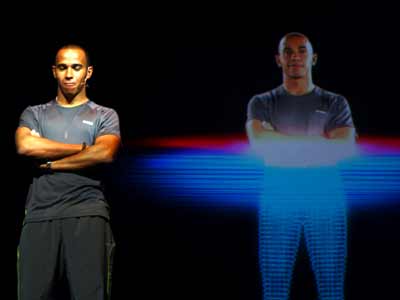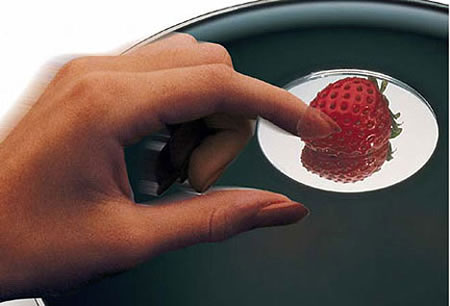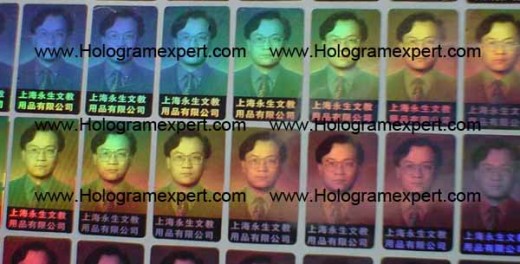The Art and Science of Streaming Action Transmission Holography
Streaming 3D holographic video can be done in a few ways




There is more than one way to make holograms
Holograms have been around almost since the time of the invention of the Laser. In fact, holography in its original form was invented in 1947 by a Hungarian physicist Dennis Gabor. The first practical holographic photo was taken using a laser in 1962. As with photography, holograms started in a monochrome format; that is; one color. That color was a very specific kind being of one wavelength and coherent, which means that But the similarity with photography departs from a two dimensional presentation to a three dimensional presentation. Out of several methods to construct a hologram, there are two basic kinds of holograms. In one case, one can view the three dimensional image in ordinary light as one looks at the film surface. In the transmission variety, a laser is shone through the film and the image is projected outside of the film in a three dimensional image. In the really good transmission holograms, something to project the image into is required like a light mist or smoke. Today' transmission holograms can also be done in full color and in live motion, hence the term “streaming action transmission hologram.
In all cases with laser holography, holograms are constructed with the use of coherent light, usually from a laser. This is split into two beams by a lightly silvered glass reflector that allows some laser light to pass through, while some is reflected. One beam is allowed to bounce off a target image that is being photographed. The other is used as a “reference beam” and does nothing more than to interact with the image bounced light on a film surface. Together, the light beams create an interference pattern that is what gives us the illusion of peering through the film to the three dimensional image behind it. Holograms have evolved to a huge number of types and applications. These range from security applications on script money, credit cards and photo identification to three dimensional live streaming transmission hologram that creates the illusion of actual events taking place, but have no substance in the material.
How to of holography
The idea of the three dimensional live streaming transmission hologram is based on existing technology incorporating film, mirrors, lasers and projectors. Nor are lasers the only way to create live streaming holographic full color transmissions, but for the most part, lasers are involved, but this is changing rapidly. Holograms today can be done digitally without lasers at all. There is an increasing trend to use digital photography in the construction of holograms that are manipulated by software. These have real potential of evolving to full color live streaming holographic images, or said in another way, three dimensional film, such as is becoming the rage with 3D TV. Today's live streaming transmission holograms often rely on the use of polarized glasses and are thus only a mimic of the real thing where no polarized glasses are required.
During the World Exposition of 1986, a live streaming projected holographic transmission was displayed in front of astonished audiences in the Aboriginal Pavilion. The images were of First Nation themes, but the three dimensional, full color, animated images of Salish First Nations iconography and myth was fascinating to say the least. Smoke was used as the “screen” upon which the live streaming images were projected. This was First Nation art taken to the next level. This was then and now the art has been perfected to a high level and can be accomplished with or without lasers and projected on “screen” media such as clouds or a fog bank. A fine diffuse mist will also serve and the images can be projected around a crowd of people where some are real people and others are images of whatever the artist imagines or desires.
Another way to transmit full color three dimensional live streaming images is via a network of crystal spheres linked by fiber optics. With these, there is no deterioration of image from source to viewing location. However, materials being what they are, a long distance transmission will require booster technology along the way. The one disadvantage of this kind of transmission is size limitation. This is not a problem with digital or laser based versions of holographic movies. For the most part, this technology is being used for entertainment and security purposes. However, there is a sinister application as well, in the theater of war and psychological operations to deceive and confuse combatants.






